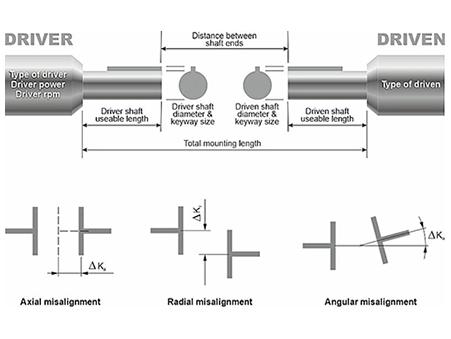
Posted to News on 5th Oct 2022, 11:00
Mechanical power transmission – driver to driven

The difference between flexible shaft couplings and rigid shaft couplings is not just in the terminology but in adsorption of torque on the driver and driven shafts, as the experts at jbj Techniques explain.
Shaft alignment is key to preventing unnecessary wear and damage to pumps, motors, gearing, seals, bearings and other components within a driveline. Improper alignment can lead to premature failure, downtime and extra costs.
Axial misalignment can be caused by different tolerances or by thermal expansion of shafts and components that the shafts are in contact with.
Radial misalignment can be defined as a measure of the offset distance between the centre lines of the driving and driven shafts. This type of misalignment causes the highest stress due to the forces involved.
Angular misalignment can be defined as a measure of the angle between the centre lines of the driving and driven shafts, where those centre lines would intersect approximately halfway between shaft ends.
Shaft misalignment is the result of displacement during assembly and operation and where machines constructed with two radial bearings each are rigidly coupled causing high loads to be applied to the bearings. Elastic deformation of base frame, foundation and machine housing will lead to shaft misalignment which cannot be prevented even by precise initial setup alignment.
Furthermore, because individual components of the drive train heat up differently during operation, heat expansion of the machine housings causes shaft misalignment. Poorly aligned drives are often the cause of seal, rolling bearing or coupling failure. Alignment should be carried out by specialist personnel in accordance with operating instructions.
Flexible shaft couplings are designed to relieve the effects of mechanical power transmission shaft misalignment. Rigid shaft couplings are able to transmit higher torque than flexible shaft couplings due to the cushioning effect of flexible coupling elements adsorbing some of the torque when using flexible shaft couplings.
Want the latest machine building news straight to your inbox? Become a MachineBuilding member for free today >>
28 Trowers Way
Holmethorpe Industrial Estate
RH1 2LW
UNITED KINGDOM
+44 (0)1737 767493

















